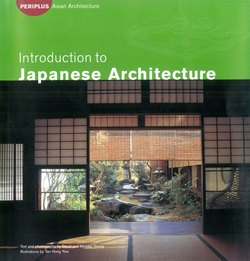Читать книгу Introduction to Japanese Architecture - David Young - Страница 6
На сайте Литреса книга снята с продажи.
ОглавлениеContents
| Development of Traditional Architecture | 4 |
| Basic Principles of Japanese Architecture | 6 |
| Pre-Buddhist Cultures | 12 |
| Reconstructed Jōmon and Yayoi Settlements | 14 |
| The Grand Shrines at Ise | 18 |
| Tomb Mounds | 22 |
| Ainu Buildings | 24 |
| Influences from Korea and China | 26 |
| Heijōkyō: An Early Capital | 28 |
| Hōryūji: The Oldest Extant Temple | 30 |
| Nara Period Temples | 32 |
| Post-Buddhist Shinto Shrines | 34 |
| Developing a Cultural Identity | 36 |
| Palaces and Mansions | 40 |
| Mountain Temples | 44 |
| Paradise Halls | 48 |
| Merging of Shinto and Buddhist Architecture | 52 |
| The Way of the Warrior | 54 |
| New Principles in Residential Architecture | 56 |
| Kinkakuji and Ginkakuji Temples | 58 |
| The Way of Tea | 62 |
| Feudal Period Temples | 66 |
| The Ichijōdani Historic Site | 68 |
| Castles and Castle Culture | 72 |
| Centralized Authority | 76 |
| Edo: The Feudal Capital | 78 |
| Takayama: An Administrative Town | 80 |
| Kanazawa: A Castle Town | 82 |
| Ogimachi: A Farm Village | 84 |
| Minka: Rural Houses | 88 |
| Kurashiki: A Rice Merchant Town | 92 |
| The Important Role of Storehouses | 94 |
| The Mausoleums at Nikkō | 96 |
| Sukiya Style Villas and Palaces | 100 |
| Theaters and Sumo Rings | 104 |
| Japan in Transition | 108 |
| Pseudo-Western and Blended Styles | 110 |
| Residential Architecture in the Traditional Style | 112 |
| Inns in the Traditional Style Temples and Shrines in the | 116 |
| Traditional Style | 118 |
| Modern Architecture | 122 |
| Glossary | 127 |
| Bibliography | 128 |
